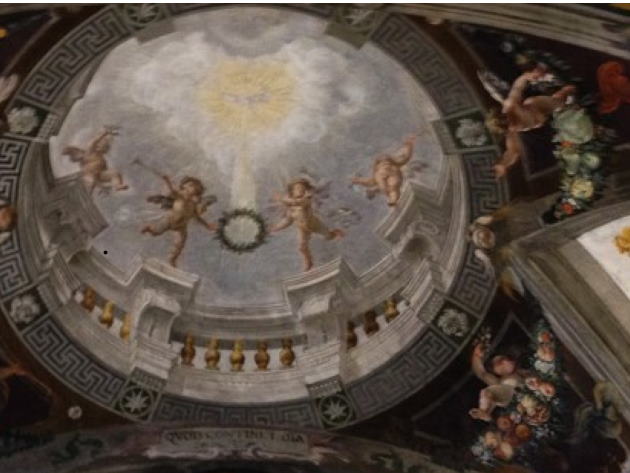
Located on Via XXIV Maggio, the main connection between the Quirinale Palace and via Nazionale, the church has ancient origins: its history seems to have begun as early as the 9th century, although its first documentary reference is in 1030, when it is mentioned with the name of Santo Stefano in Caballo. The Caballo, or horse, is a reference to the colossal statues of the Dioscuri with their horses who represented a constant presence on the Quirinale hill.
In 1507, the church was granted by Pope Julius II to the Dominican friars who set about rebuilding it and adding a friary. At the end of the century, however, the Dominicans moved to the basilica of Santa Maria sopra Minerva and church and convent were granted to the Theatine Order, to whom we owe the splendid interior decorations. In 1877, the authorities announced that the street outside would be widened and the gradient eased. As a result, two chapels were demolished and part of the ceiling was dismantled. The difference in height of about nine meters between the church and the road was masked by a new façade designed by architect Andrea Busiri Vici, with a fake entrance portal. The new frontage is in fact only decorative and entrance to the church is through a small side doorway, leading to a staircase.
The church has a single nave, with two chapels on each side and a large presbyterium. The 16th century coffered wooden ceiling is richly decorated, with carvings in blue and gold. The first chapel on the left is the oldest: its floor is decorated with majolica tiles, probably a work by Luca della Robbia, while the frescoes by Polidoro da Caravaggio and Maturino, with scenes from the life of St Catherine of Siena and St Mary Magdalene, constitute the first Roman example of the representation of nature and the landscape independent of the sacred subject represented. The plinth of the walls is covered by a beautiful monochrome frieze with cherubs while the ceiling vault was frescoed by the Cavalier d’Arpino. At the end of the left transept there is the sumptuous Bandini chapel, with an octagonal plan with dome and lantern, designed by Ottaviano Mascherino and added to the church in 1580, at the behest of Cardinal Bandini who made it his own sepulchral monument. The altarpiece by Scipione Pulzone, the frescoes by Domenichino in the corbels of the dome and the stucco statues by Alessandro Algardi and Francesco Mochi contribute to embellishing the interior.
The cloister to the north of the church has a small garden in its garth, and is decorated with stuccoes: in the 16th century this was the meeting place of a sort of religious cenacle, which included among its members Michelangelo Buonarroti and Vittoria Colonna.
Information
For the timetable of the masses and visiting conditions, please consult the contacts.
 Condividi
Condividi
Location
To find out about all accessibility services, visit the Rome accessible section.











































